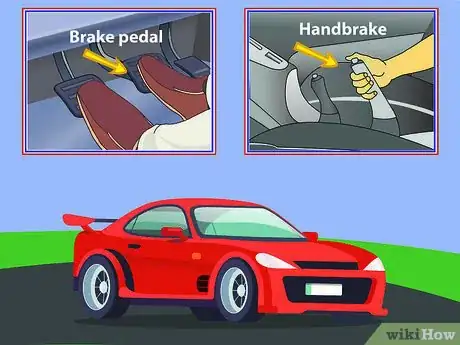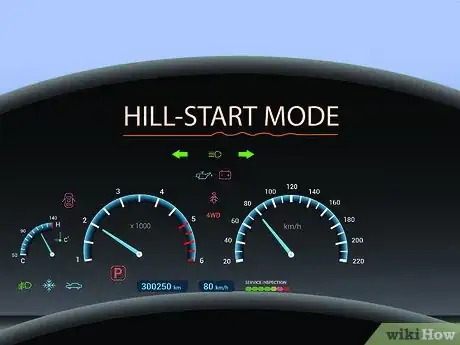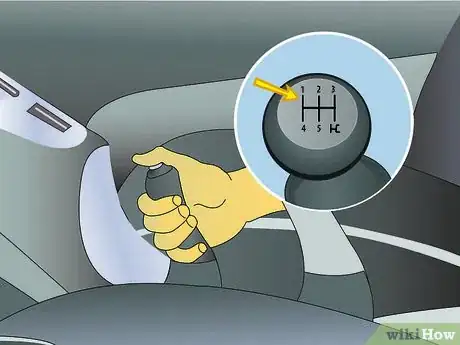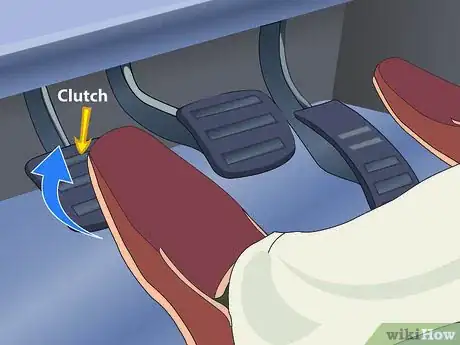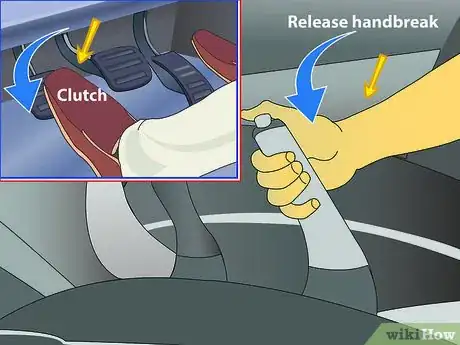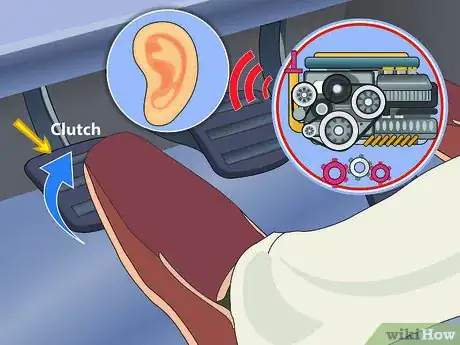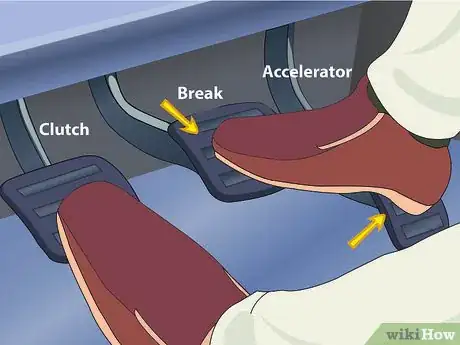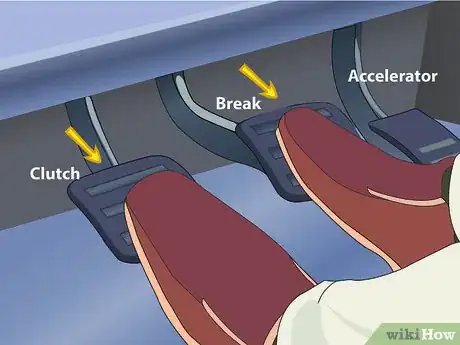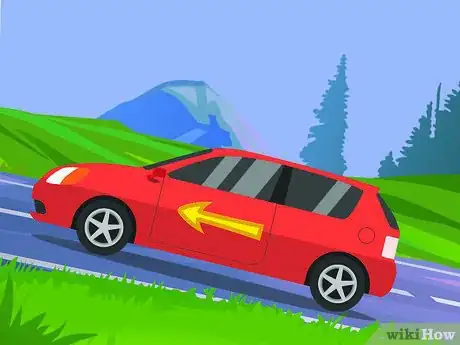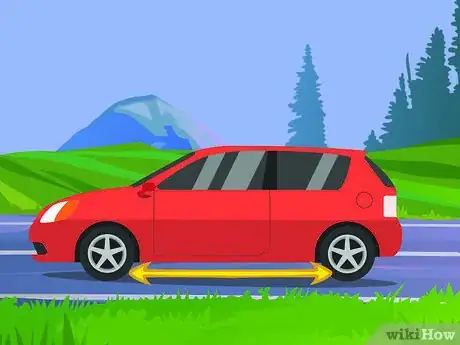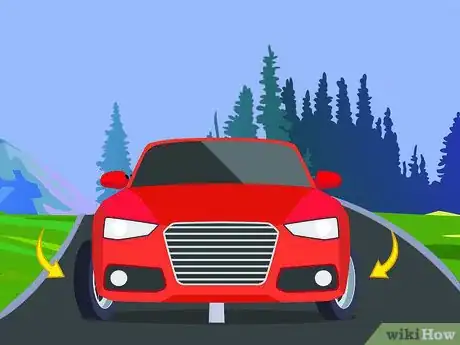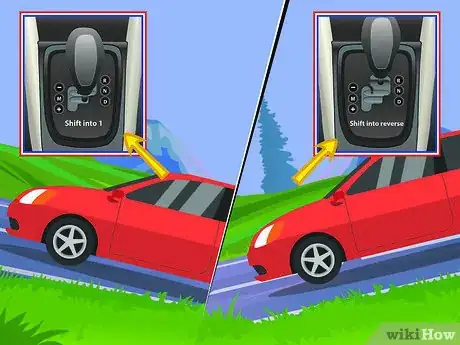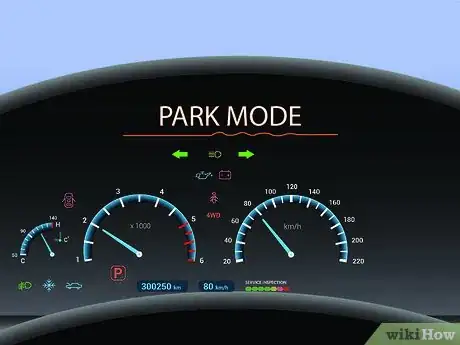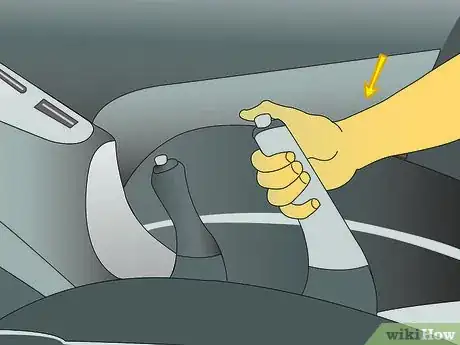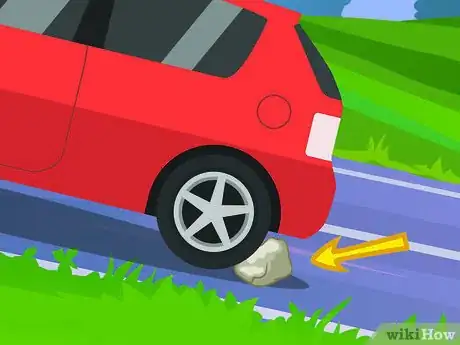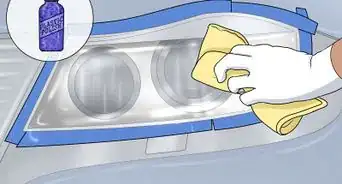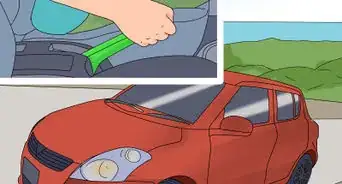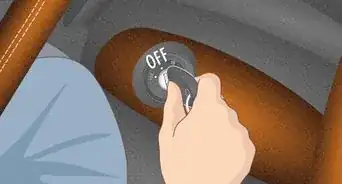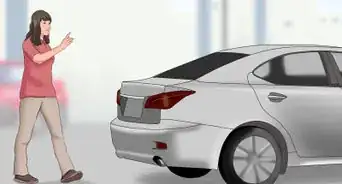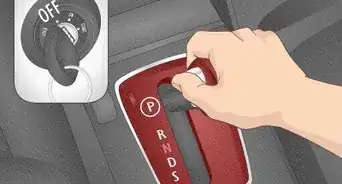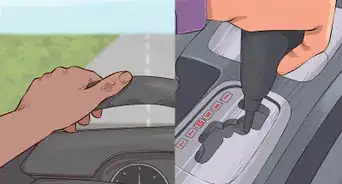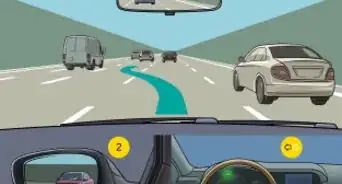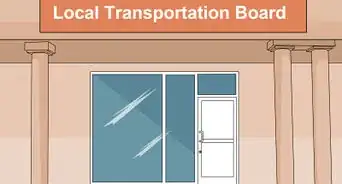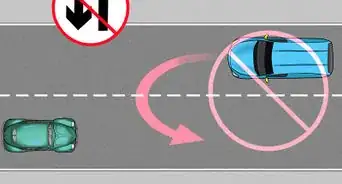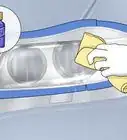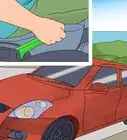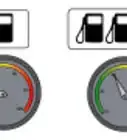This article was co-authored by Ibrahim Onerli. Ibrahim Onerli is a Driving Instructor and the Manager of Revolution Driving School in New York City. His mission is to make the world a better place by teaching safe driving. Ibrahim trains and manages a team of over eight driving instructors. He specializes in teaching defensive driving and stick shift driving.
There are 9 references cited in this article, which can be found at the bottom of the page.
This article has been viewed 398,108 times.
When you’re on a hill, gravity is working against you while you’re driving. There are different methods for manual and automatic transmissions to prevent rolling, since these two types of vehicles operate very differently. After some practice, you’ll be able to prevent your car from rolling while you’re on a hill.
Steps
Preventing Rolling with a Manual Transmission
-
1Come to a complete stop. When you are on a slope, you need to come to a complete stop using either the brake pedal or the handbrake. This holds true whether you’re facing up a slope or down a slope.
- Some drivers prefer to use the handbrake, because it frees up their right foot to use on the gas pedal when they intend to start driving again.[1]
-
2Use hill-start assist, if available. Many manual cars have hill start assist, which will help keep your car from rolling backward when you are stopped on a hill. It will also help when you try to start from a complete stop as well. If you have hill-start assist in your car, it will automatically work so you do not have to press any buttons.[2]
- Hill-start sensors in the car automatically detect when your vehicle is on an incline. The hill start assist maintains pressure on the brake pedal for a set period of time to help you while you’re moving your foot from the brakes to the gas pedal.
- Hill-start assist does not increase your traction, so if you are in inclement weather or the road is slippery, you may still start to roll backwards.
Advertisement -
3Shift into first gear. When it is time for you to begin moving again, shift into first gear and step on the accelerator pedal. Do not release the handbrake yet.
- Continue pressing on the accelerator until the engine spins at about 3000 RPM.
-
4Lift the clutch to its biting point. At this point, you’ll feel the front of the car lift slightly since the clutch is taking on the weight of the car.
-
5Slowly release the handbrake. Gradually release the handbrake as you lift the clutch slightly.[3]
- As the handbrake disengages and releases, the car should begin to move forward.
-
6Slowly release the clutch, listening to the engine. When you hear the sounds of the engine start to fade, continue applying more and more throttle. Now, you’re able to start driving up the hill again without rolling backwards.
- Make sure to release the clutch until it is fully engaged.
-
7Hold the brake pedal, if no handbrake. If your handbrake doesn't work, use the heel of your right foot to hold down the brake pedal while you use your toes to work the accelerator. You will release the brake pedal instead of the handbrake as you’re releasing the clutch.
- If your handbrake doesn’t work, take your car to a mechanic and have it fixed. Relying on the transmission to hold the car causes wear and tear and can have adverse effects on your engine.
Preventing Rolling with an Automatic Transmission
-
1Keep your foot on brake. If you are waiting for a traffic light to change, continue keeping your foot on the brake to prevent your car from rolling. Holding the brake pedal down will ensure that you’re at a complete stop and prevent you from rolling backwards.[4]
- If you’re going to be stopped for a while, you can shift into neutral. Keep your foot on the brake pedal the entire time.
-
2Shift into drive. If you have chosen to shift into neutral, you’ll now need to shift into drive to move the car forward. You will start to push down on the accelerator pedal as you smoothly release the brake.
- While you are moving your foot from the brake to the accelerator, you will need to move your foot quickly to prevent your car from rolling back. It is normal for the car to move back a few inches, but you need to be cognizant of any cars or people behind you while you’re transitioning.
-
3Drive forward. Preventing rolling back in an automatic transition is more straightforward than with a manual transmission. Now that you’re ready to start again from your complete stop, you’ll have to make the transition smoothly from the brake to the accelerator. Press down about half way on the accelerator, though you will need to step down less if there are other vehicles in front of you.
- Depending on how steep the hill is, you may need to step harder on the accelerator than you would on a flat road.
Preventing Rolling While Parking on a Hill
-
1Parallel park as you normally would. Your car is more likely to roll while you are parking on a hill than it would on a flat surface.
- Since parallel parking on a slope can be more difficult than parking on a flat surface, you need to be very comfortable parallel parking and be confident in your skills.
-
2Turn the wheels. After you park on a slope facing uphill, turn the wheels away from the sidewalk or shoulder. This will rotate your tires, so if your gears disengage, or the emergency brake fails, the car will simply hit the curb instead of rolling down the hill.
- If you are facing downhill, turn the wheel to the right so the wheels are facing the curb or sidewalk. [5]
-
3Shift gears, if you have a manual transmission. For manual transmissions, you will need to shift your car into first gear or reverse once you are in the parking space.[6]
- Leaving your car in neutral will increase the chances that it will roll backwards or forwards.
-
4Put car in park, if you have an automatic transmission. For automatic transmissions, you need to put your car in park after you are in the parking space.
- Keep your foot on the brake until you have fully engaged the emergency brake and have shifted gears into park.[7]
- Leaving the gear in drive can damage your transmission.
-
5Apply the emergency brake. You can do this with both manual and automatic transmissions. The emergency brake is your best assurance that the car won’t roll either forward or backwards when you’re parked on a hill.
-
6Use a wheel chock. When you are parking on a steep slope, you can use a wheel chock to stabilize your car and prevent it from rolling backward. A wheel chock is an object, usually a block of wood, that you place behind the back wheel of your vehicle.
- You can purchase wheel chocks online, at auto parts stores, or at major realtors. You can also make your own chocks using wood.[8]
- If you are parked with the front of the car pointing downhill, place the chock under your front tire.
-
7Safely drive away. When you are ready to leave your parking spot and continue your drive, you will need to remove the wheel chock (if you used one) and disengage the emergency brake.[9] When you are pulling out of a parking space while on a hill, you will need to keep your foot on the brake until you are sure that is safe to pull out.
- Once you are able to pull out, you can transition your foot from the brake pedal to the accelerator. You will need to make this a smooth transition, otherwise you risk rolling backwards either into the curb or a vehicle parked behind you.
- Be sure to check your mirrors before you pull out of your parking space.
Expert Q&A
Did you know you can get expert answers for this article?
Unlock expert answers by supporting wikiHow
-
QuestionWill an automatic car roll back on a hill?
 Ibrahim OnerliIbrahim Onerli is a Driving Instructor and the Manager of Revolution Driving School in New York City. His mission is to make the world a better place by teaching safe driving. Ibrahim trains and manages a team of over eight driving instructors. He specializes in teaching defensive driving and stick shift driving.
Ibrahim OnerliIbrahim Onerli is a Driving Instructor and the Manager of Revolution Driving School in New York City. His mission is to make the world a better place by teaching safe driving. Ibrahim trains and manages a team of over eight driving instructors. He specializes in teaching defensive driving and stick shift driving.
Driving Instructor
-
QuestionWhat is the cause of my Peugeot 406 rolling backwards on any slope?
 Community AnswerIt may not be set correctly. Follow these steps to ensure it does not roll backward: 1) Park close to the curb, and 2) turn the steering wheel full to right. You may also need to chock the wheels.
Community AnswerIt may not be set correctly. Follow these steps to ensure it does not roll backward: 1) Park close to the curb, and 2) turn the steering wheel full to right. You may also need to chock the wheels. -
QuestionAlways having a problem when caught in the middle of traffic in an inclined position. Engine goes dead every time putting on 1st gear. What do I do?
 Community AnswerGive it more gas, as you need to overcome gravity and friction. Practice on a hill where you won't encounter traffic if you feel uncomfortable driving up a hill from a standstill.
Community AnswerGive it more gas, as you need to overcome gravity and friction. Practice on a hill where you won't encounter traffic if you feel uncomfortable driving up a hill from a standstill.
Warnings
- Always check your mirrors while you are parking on a hill. Objects and people could be in your blind spots if you do not check carefully.⧼thumbs_response⧽
- Be extra cautious when you have another vehicle close behind you while you are stopped on a hill. This gives you less margin for error if you do happen to start to roll.⧼thumbs_response⧽
References
- ↑ https://www.yourmechanic.com/article/how-to-get-started-on-a-hill-when-driving-a-manual-transmission-car-by-cheryl-knight
- ↑ https://mycardoeswhat.org/safety-features/hill-start-assist/
- ↑ http://www.cartalk.com/content/learn-drive-stick-7
- ↑ http://www.driving-test-success.com/driving-articles/driving-automatic-car.htm
- ↑ https://www.cookiesandclogs.com/wp-content/uploads/2015/08/park-on-hill-print-01.pdf
- ↑ http://www.mto.gov.on.ca/english/dandv/driver/handbook/section2.8.3.shtml
- ↑ http://www.drivingtesttips.biz/hill-starts.html
- ↑ http://www.doityourself.com/stry/how-to-make-and-use-boat-trailer-wheel-chocks
- ↑ http://www.dmv.org/how-to-guides/parallel-parking.php
About This Article
To prevent a car with manual transmission from rolling back on a hill, come to a complete stop and engage the handbrake. Next, shift into first gear and step on the accelerator pedal until the engine spins at about 3000 RPM. Then, lift the clutch and slowly release the handbrake so that the car begins moving forward slowly. When the sounds of the engine start to fade, continue applying throttle and drive the car up the hill. For tips on preventing roll-back in a vehicle with automatic transmission, read on!
